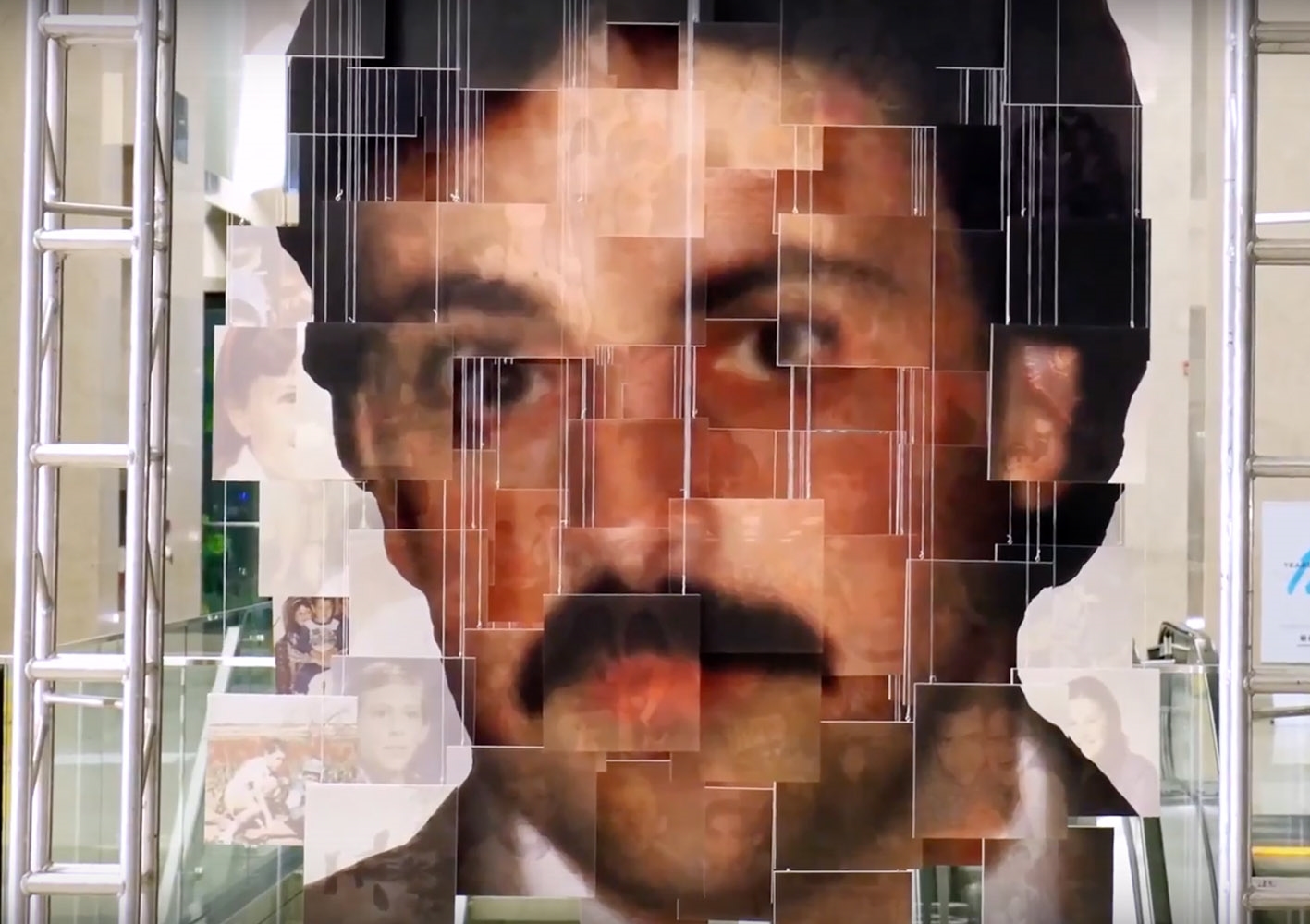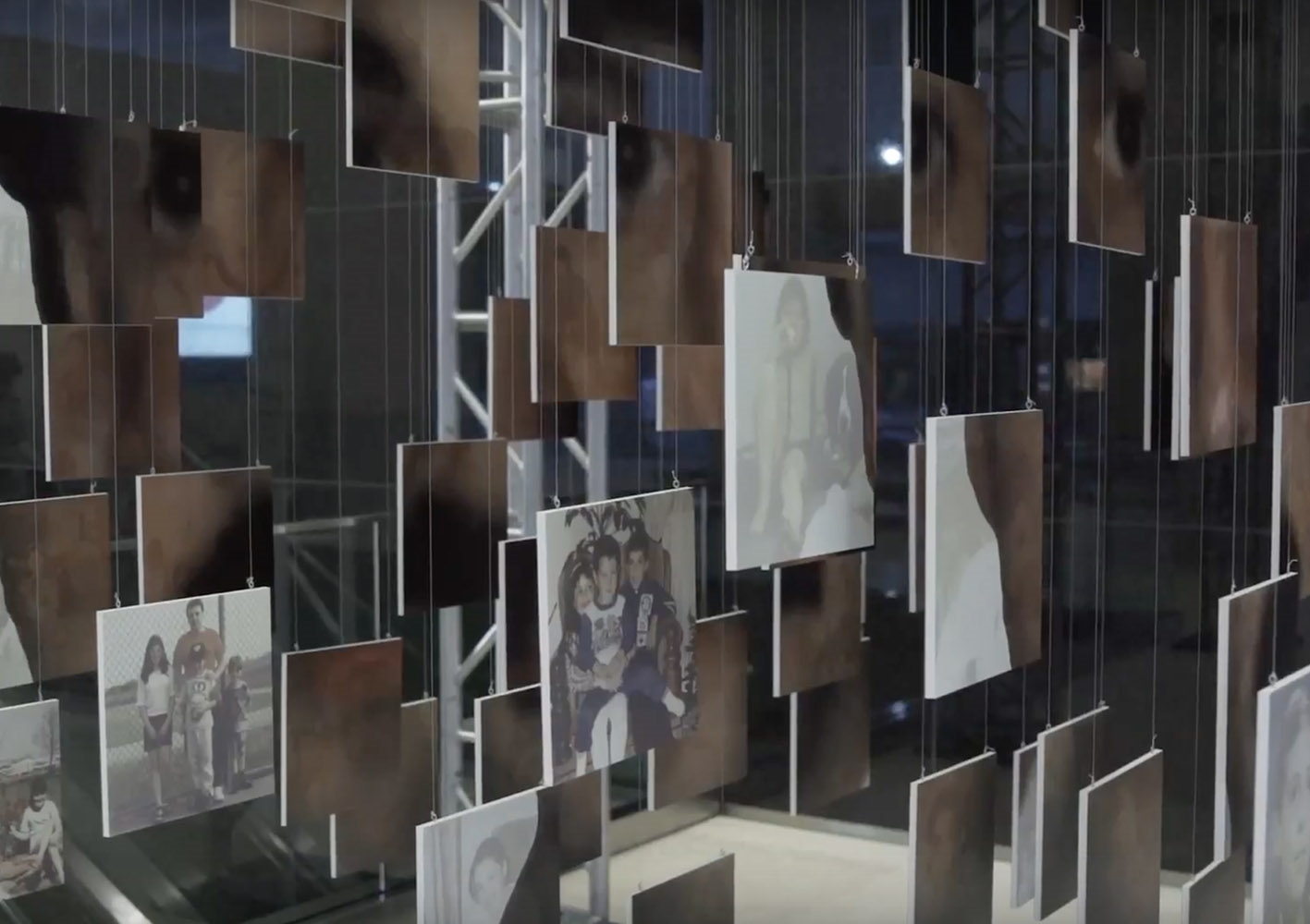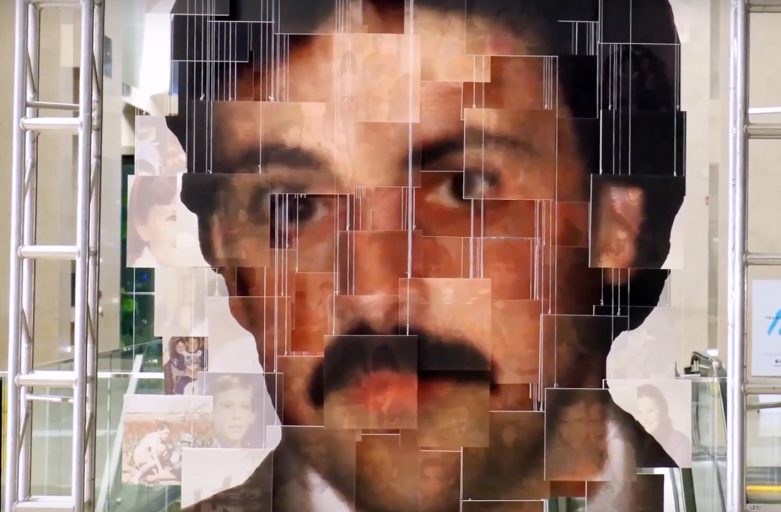12 Years Stolen
Cause (BRONZE)
Underdog (BRONZE)
Client Credits: Innocence Canada
Innocence Canada
Debbie Oakley, Executive Director
Win Wahrer, Director of Client Services
Agency Credits: kbs
KBS Canada
Matt Hassell, CCO
Laura Kim, ECD
Kate Thorneloe, Copywriter
Jess Carter, Art Director
Claudia Kloc, Junior Copywriter
Caroline Sierra-Bornais, Art Director
Nick Hutcheson, Producer
Lauren Sharpe, Producer
David Quach, Videographer
David Quach, Editor
Mary Cao, Account Supervisor
Marie Magnin, VP Account Services
Section I — CASE PARAMETERS
| Business Results Period (Consecutive Months): | October 2016-December 2016 |
| Start of Advertising/Communication Effort: | October 2016 |
| Base Period as a Benchmark: | October – November 2015 |
| Geographic Area: | Ontario |
| Budget for this effort: | $0 – $50,000 |
Section IA — CASE OVERVIEW
Why should this case win in the category (ies) you have entered?
This case demonstrates a complete turnaround for Innocence Canada, a non-profit organization founded to help exonerate the wrongly convicted. It went from an organization on the brink, facing drastic operational cutbacks, a freeze on new applications and a backlog of 86 cases to a fully funded thriving organization able to continue to offer an important service to the wrongly convicted.
By taking the time to understand the stories behind the history of the cases, the staff, and exonerees directly, it inspired the creation of a 360- degree life-size installation in a high-traffic, public area that could paint the picture of all the pain and missed moments of a wrongful conviction.
The results were unprecedented:
1.A major lift in charitable fundraising
2.Government funding of $900,000 over a 3-year term for the first time in history
3.Leadership recognition by the federal Minister of Justice to advise on much-needed reforms to the criminal justice system in Canada.
4.Over 76 million earned media impressions and profound interest from journalists and national news coverage, including Metro Morning, Breakfast Television, CTV, CBC with Ben Mulroney, Vice, and beyond.
Section II — THE CLIENT’s BUSINESS ISSUES/OPPORTUNITIES
a) Describe the Client’s business, competition and relevant history:
Innocence Canada, formerly known as AIDWYC – The Association in Defence of the Wrongly Convicted, is a non-profit organization dedicated to identifying, advocating for, and helping to exonerate individuals convicted of crimes they did not commit. Innocence Canada consists of 4 full-time employees, 2 part-time employees, a 13-member board of directors, and 55 pro-bono lawyers. They are Canada’s only full-time innocence organization with national scope and in their 25-year history have helped to overturn convictions of 21 individuals who spent a combined 190 years in prison. The process of overturning a wrongful conviction can take up to 10 years of work. Each one is a monumental victory for the wrongly convicted individual and for Innocence Canada.
b) Describe the Client’s Business Issues/Opportunities to be addressed by the campaign:
Despite being the only Innocence Project in Canada with national scope, it was facing a financial catastrophe and struggling to keep its doors open. Outside of the approximate $3.5 million in pro-bono work donated by lawyers across Canada, the staff of Innocence Canada manages each case throughout years of work, and provides support to wrongly convicted individuals and their families, before and after exoneration. Facing a shortfall of $250,000 in funding, this forced them to stop taking new applications, and start letting go of its team. With a backlog of 86 cases and an uncertain future, Innocence Canada needed to capture public and government attention, and galvanize the resolve of staff and clients at a time when hope seemed to be running out.
c) Resulting Business Objectives: Include how these will be measured:
With the future of the organization on the line the objectives were clear:
Business Objective: Drive $250,000 in donations to meet their annual budget for operations and keep the doors open for another year
Marketing Objectives:
1. Increase awareness of Innocence Canada and make wrongful convictions as an important Canadian issue/cause. Innocence Canada does not track awareness but given its relatively low profile we assumed awareness at <10%. We were going to use media attention as a proxy for awareness.
2. To raise funds so that the organization can continue to exist and accept new cases. Innocence Canada has an annual budget of $500,000 to $600,000 needed to pay for such things as expert witnesses and independent labs to review forensic evidence, as each case takes about eight to nine years.
Section III — YOUR STRATEGIC THINKING
a) What new learnings/insights did you uncover?
Based on the overwhelming interest in programming like ‘Making a Murderer’ and ‘Serial’, it was clear that Canadians found the issue of wrongful convictions compelling.
We deduced that the reason this interest wasn’t translating into support for the issue of wrongful convictions was because it wasn’t seen as a Canadian problem. Research revealed that Canadians were largely unaware of the extent to which wrongful convictions are an issue in Canada and they certainly never thought something like this could happen to them.
Furthermore, despite exposure to the issue of wrongful convictions, Canadians were not personally connecting with it. We know from secondary research that people are far more likely to support/donate to a cause when they feel personally connected to it.
Therefore, we couldn’t just tell Canadians about wrongful convictions and plea for money. We needed to make it personal and possible. Wrongful conviction needed to be seen as a Canadian issue that is more than just fodder for a television series or podcast. It’s a real issue that steals moments from innocent Canadians’ lives.
In order to capitalize on the inherent interest Canadians had in wrongful convictions and shed a light on the fact that it was a real Canadian issue, Innocence Canada needed to put a face to it.
Canadians needed to see this as real peoples’ stories, and relate in a way they could understand that it could really happen to anyone. Through art, we would invite Canadians to witness the impact of a wrongful conviction by creating a physical representation of life’s everyday missed moments and milestones. By introducing a Canadian face and visually quantifying what was taken from them, we would enable Canadians to emotionally connect with the cause.
b) What was your Big Idea?
To bring Canadians up-close-and-personal with wrongful convictions, we created a portrait of wrongful conviction. We wanted to create a meaningful experience that would bring Canadians face-to-face with the reality of wrongful conviction.
c) How did your Communication strategy evolve?
In order to capitalize on the inherent interest Canadians had in wrongful convictions and shed a light on the fact that it was a real Canadian issue, Innocence Canada needed to put a face to it.
Canadians needed to see this as real peoples’ stories, and relate in a way they could understand that it could really happen to anyone. Through art, we would invite Canadians to witness the impact of a wrongful conviction by creating a physical representation of life’s everyday missed moments and milestones. By introducing a Canadian face and visually quantifying what was taken from them, we would enable Canadians to emotionally connect with the cause.
d) How did you anticipate the communication would achieve the Business Objectives?
By putting a face to the issue, Innocence Canada became something Canadians could relate to and care about. Providing personal, grippingly detailed stories demonstrated the profound impact that a wrongful conviction has on an exoneree and their families.
Section IV — THE WORK
a) How, where and when did you execute it?
The integrated campaign centered around an interactive art installation strategically placed in a busy Toronto thoroughfare in the financial district.
We worked with the Co-President of Innocence Canada and past exoneree, Ron Dalton, who bravely stepped forward and agreed to share his story and put his life on display. Using his personal family photos, we created an art installation made up of the moments that were stolen from him while he was in prison. Each photo in the installation represented a moment Ron Dalton missed, camping trips he couldn’t go on, sports games he couldn’t attend, and his own children’s birthdays he couldn’t celebrate.
When the installation was viewed from one perspective, the photos came together to show Ron before he went to prison. From the opposite side, the photos pieced together to reveal an image of Ron a dozen years later, when he was finally cleared as an innocent man.
Ron’s story wasn’t just a foundation for an art installation. It was a way for Canadians to experience themselves what a dozen years of stolen moments looks like. ‘12 Years Stolen’ garnered national attention and donations. By bringing Ron’s story to life, we intrigued people enough to learn more about the organization, the dozens of additional cases of wrongful conviction, and to donate to support this service.
Through PR outreach, we secured media interviews for Ron Dalton leading up to the install and on the day of the launch event, ensuring that Canadians would hear his story first hand. Media and key influencers were invited to the launch, where they had the opportunity to meet with Ron, other exonerees, and key influencers in Canada’s justice system.
To encourage Torontonians to check out the installation, we leveraged social media by creating a Facebook invite which included a teaser video to create intrigue and promote sharing. To ensure we reached the financial district lawyers, we worked with the local property management companies to inform as many tenants as possible about the event.
To build awareness of the issue leading up to the event, ½ and full page print ads were placed in the National Post and OOH digital billboards were placed in high traffic areas, including Yonge and Dundas and the Gardiner. For those who lived outside of the city, we created a re-cap video of the installation that showcased the piece of art digitally that could be easily shared throughout the rest of the country.
We updated the website with our campaign creative and re-designed aspects of the site to drive donation more effectively.





c) Media Plan Summary
There wasn’t an official blocking chart for this campaign. We relied on donated media around the timing of the installation. All media activity happened between October 17th and November 23rd. Specifically:
PATTISON – OOH
1. Onestop elevator network in downtown Toronto
2. Exterior Digital locations:
· Digital Superboards in downtown
· Digital horizontal posters
· Richmond and Yonge Video Board
· Yonge and Edward Video board
· Yonge and Adelaide Video board
CLEAR CHANNEL – 10-Second Spots
· Yonge and Dundas Square digital billboards
· Fairview Mall digital billboard
· Vaughan Rutherford Market place digital billboard
BELL MEDIA – Standard Banners
POSTMEDIA – National Full Color Print Ad in the National Post and other publications in Canada
§ Full page size: 10.80″ W x 21.4″ H
§ Half Page size: 10.34″ x 10.214″
Section V — THE RESULTS
a) How did the work impact attitudes and behaviour?
On the road to understanding Innocence Canada and its business problem, it was quick to realize the low awareness and relatability from the public. In the highly competitive cause space with many organizations and issues to support, Innocence Canada was low on the list as it was not something that has previously touched peoples’ daily lives or has necessarily provided positive impact to those around them.
The campaign was able to capture the pain and loss of freedom of wrongful conviction en masse, and in a relatable way. Whether through the installation which captured many missed moments of the exoneree’s life, or the print and OOH ads showcasing birthdays and other things we take for granted that were missed. Innocence Canada cultivated a story with the public through Ron’s story, so that people beyond those families whose lives have been touched, could understand what it felt like to be in that position and the impact of their work.
The effect of the installation was not only a lift in donations and awareness, but beyond that, allowed people to shift their attitude in beginning to understand that “if it happened to him. It could happen to me.”
b) What Business Results did the work achieve for the client?
“12 Years Stolen” garnered national attention, raised unprecedented donations from the public, and inspired government action.
The campaign got the attention of the Ontario Government and the Law Society of Upper Canada, who agreed to fund Innocence Canada $900,000 over the next 3 years. This funding was unprecedented in the organization’s history and provided them with financial stability to continue operations and accept new cases.
The campaign also drove the following results:
- We increased awareness of Innocence Canada and made wrongful convictions an important Canadian issue/cause.
- Overall the campaign achieved 76 million earned media impressions, exceeding our goal by over 50 million.
- We raised donations so that the organization could continue to accept new cases.
- Innocence Canada saw a 185% increase in charitable fundraising donations which they directly attribute to this campaign.
Furthermore, for the first time in the organization’s history, the federal government recognized Innocence Canada for their leadership role when asked by the Minister of Justice to host a roundtable discussion with experts from across Canada to advise her on reforms to the Canadian criminal justice system.
c) Other Pertinent Results
Innocence Canada benefitted from the media value and news uptake. The campaign achieved a 25% ROI based on the federal government funding that happened post-campaign window.
Donations raised were almost 185% higher for Innocence Canada.
This coupled with the funding was the highest amount received in a donation campaign since the inception of the organization.
Beyond solely the financial results of this campaign, the most important return on this investment is one that cannot be measured. If Innocence Canada had to continue facing stalled operations, they would no longer be able to accept new cases. The 16 of the 86 backlogged cases were of those who they were almost certain were innocent. Other cases would take almost 10 years to even glance at. Potentially innocent people would continue to stay imprisoned for years to come, and face a completely unjust lack of freedom. The criminal justice system would continue to face less scrutiny in the validity of its convictions, and all the work done by the organization in the past 25 years would have taken a major step back.
d) What was the campaign’s Return on Investment?
N/A
Section VI — Proof of Campaign Effectiveness
a) Illustrate the direct cause and effect between the campaign and the results
We know the campaign did its job of creating awareness for and interest in the cause of the wrongly convicted. The Ontario government funding is directly related to the media uptake surrounding the campaign. The conversations that influencers and journalists began shortly after the campaign began, in late October and early November.
Spike Periods for donations:
· October 2016à Media coverage of financial concerns and campaign launch and the passing of Peter Meier (Former president and Board member) at the end of September
· November 2016à Media coverage during campaign
· December 2016à Year-end tax donations
b) Prove the results were not driven by other factors
Campaign spend vs. history and competition:
Campaign spend vs history
The campaign spend was nominal in this situation, and also the first marketing campaign spend in its history. The earned media impressions were directly attributed to the content of the campaign. The creative approach of 12 Years Stolen, showcasing the impact wrongful conviction has on real people and their families started a national conversation.
Pre-existing Brand momentum:
Given the lack of awareness of Innocence Canada there was no brand momentum to speak of.
Pricing:
N/A
Changes in Distribution/Availability:
N/A
Unusual Promotional Activity:
N/A
Any other factors:
N/A
